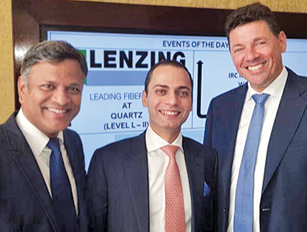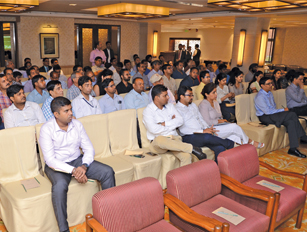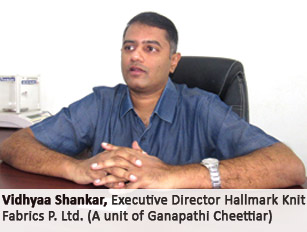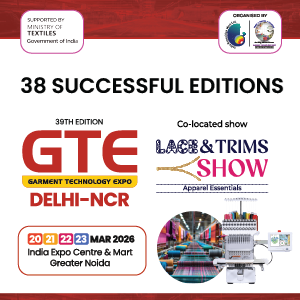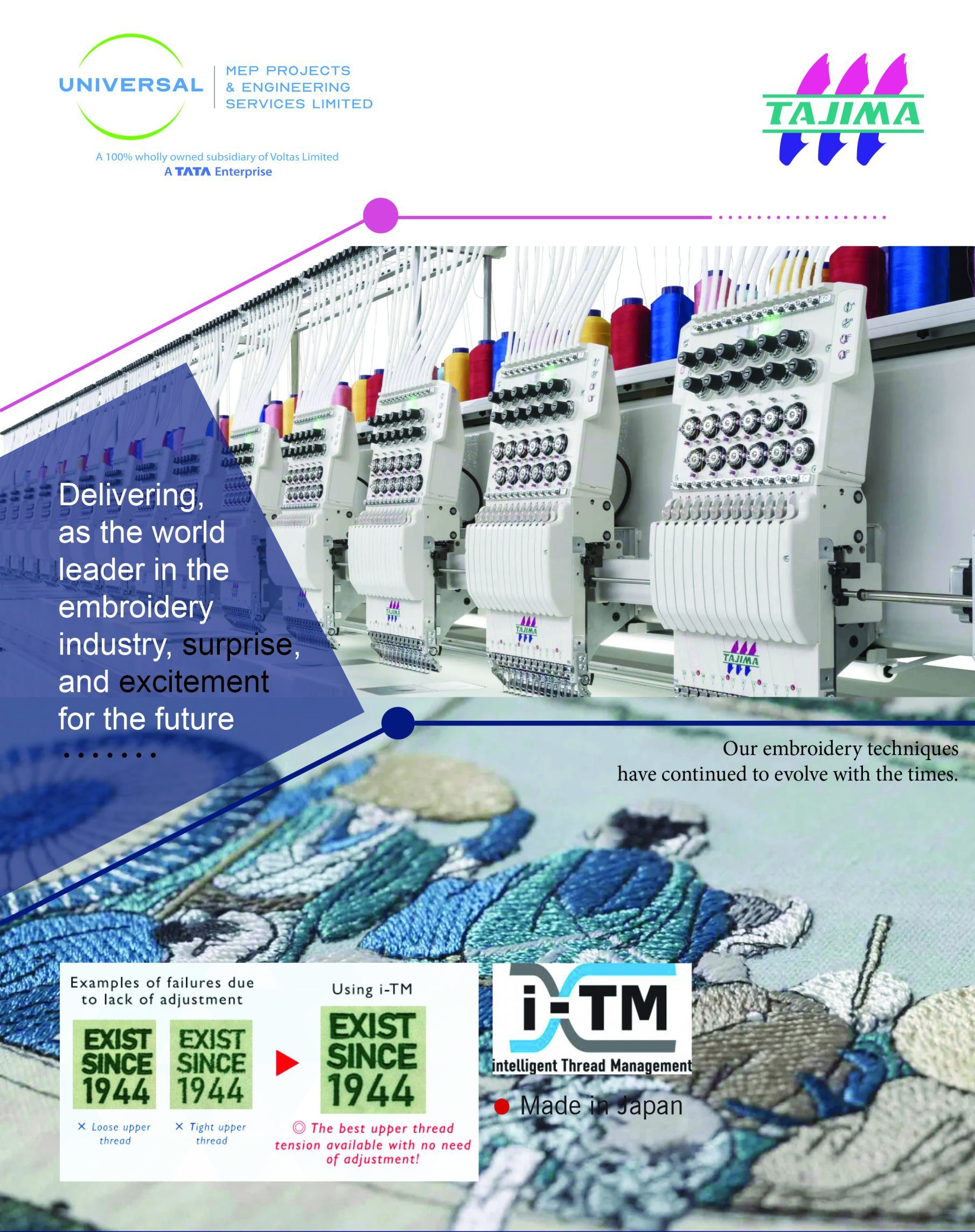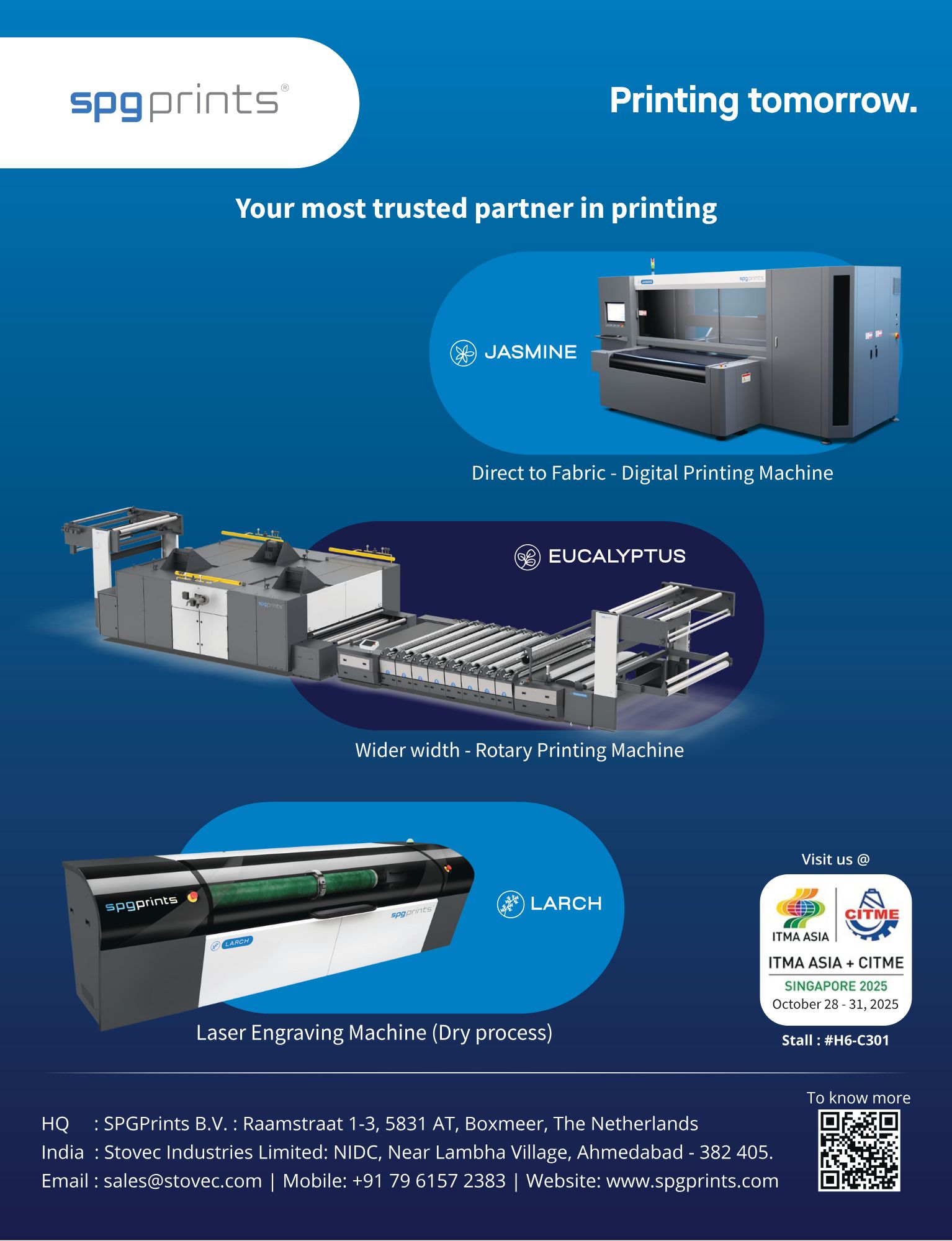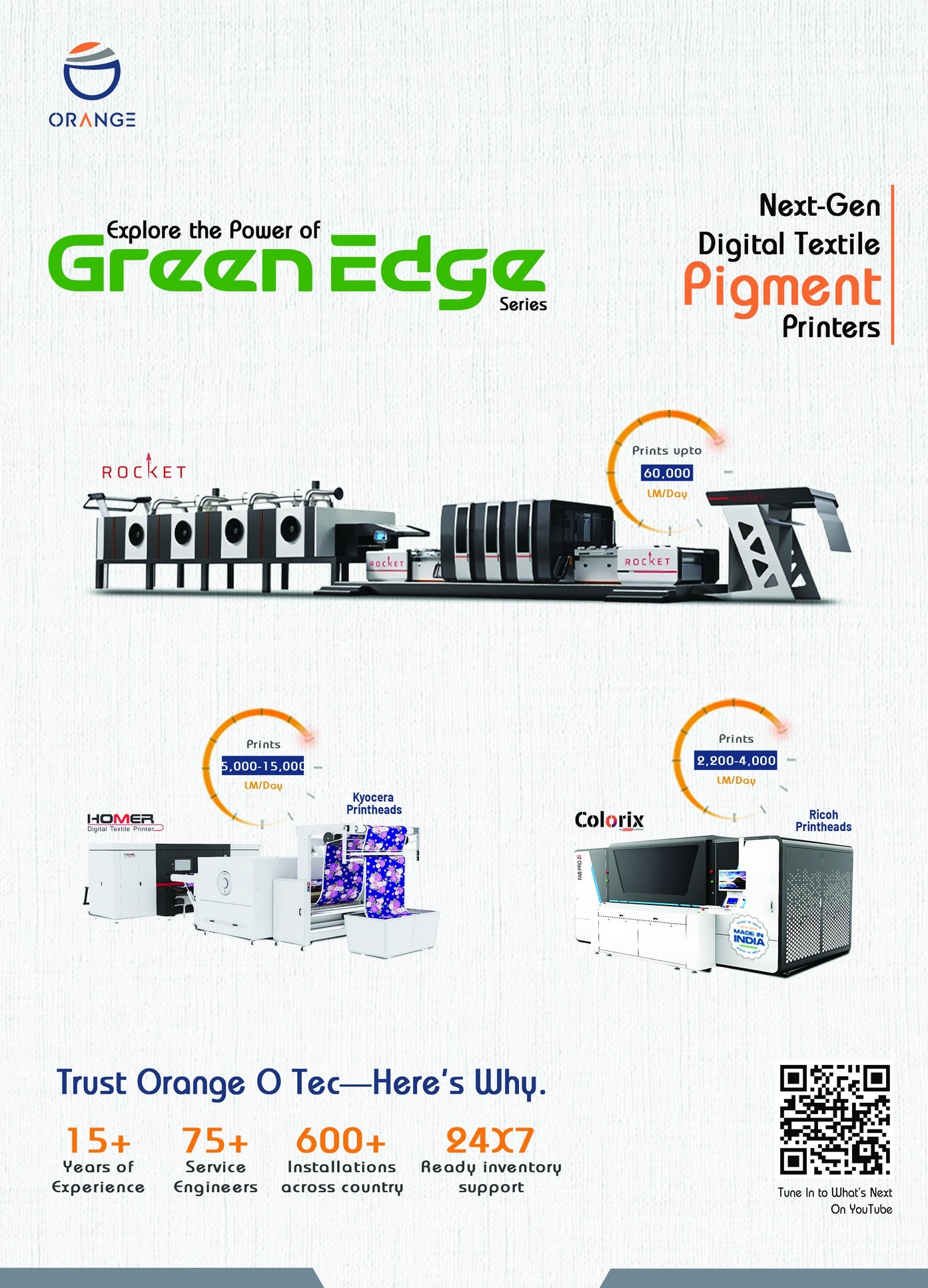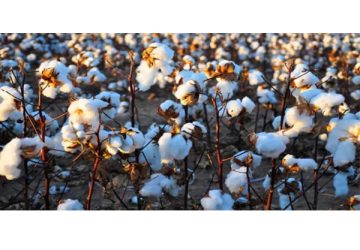In an exclusive interview with Apparel Views, Kaashvi Kharawala of Solunaris Pvt. Ltd. discussed about the recent development and future of the digital textile printing industry. Some excerpts from the same are shared here.

𝐊𝐚𝐚𝐬𝐡𝐯𝐢 𝐊𝐡𝐚𝐫𝐚𝐰𝐚𝐥𝐚, Chief Technology Officer (CTO), 𝐒𝐨𝐥𝐮𝐧𝐚𝐫𝐢𝐬 𝐏𝐯𝐭. 𝐋𝐭𝐝.
Can you give a small brief about your company and the products offered for digital textile printing?
Solunaris, a wholly owned subsidiary of Jay Chemical Industries Private Limited India, was launched in Germany in 2010 in response to customer demands for high-quality products and services across the complete digital textile printing value chain. This technology was relatively new and primarily centered around Europe. To fulfill these demands, we established an autonomous unit in Wiesbaden, Germany.
Solunaris provides a comprehensive range of “Antelos” reactive digital printing inks that are suitable for natural and cellulosic fibres and are compatible with all major print head technologies. Our core abilities include extensive research and development, thorough quality assurance, and a commitment to meeting all customer requirements as quickly as possible. Today, Solunaris is a favored partner for top digital printing companies looking for high-quality reactive digital textile printing inks. Our skilled team assists customers throughout the application process, offering end-users with complete solutions ranging from hardware, software, and chemistry. Our Antelos range of products fulfills environmental criteria such as GOTS and complies with ZDHC Level 3.
What new products you have launched recently for digital textile printing? What edge does it have over the others available in the market?
Reactive digital textile printing inks offer wide use and exponential potential. With the ongoing introduction of new print head technologies into the market, we have expanded our solutions to satisfy changing needs. Two years ago, we introduced the Antelos R-RCD ink range to power Ricoh Gen 5 / 6 print head technology printers. In response to increased market demand, we have also introduced sublimation inks. Additionally, Disperse and Pigment ink chemistries are being developed and will be available soon.
Solunaris is completely backward integrated, with backing from our parent business, Jay Chemical Industries Private Limited, allowing us to manage the quality, consistency, and economics of finished goods from the raw material stage. We are proud to offer and sell exclusively self-manufactured products. Because of our unique status, we are able to provide the broadest range of reactive digital textile printing inks for all established print head technologies, as well as custom ink solutions.
Strong quality assurance and control, paired with technical competence and quick response times, are the fundamental differentiators that promote client satisfaction and maintain Solunaris’ competence. Regardless of our triumphs, we do not take our position for granted. We constantly aim to provide extra value to our customers, meeting and exceeding their expectations.
How has digital textile printing industry grown in last few years in India? (In terms of demand for Ink)
The digital textile printing ink industry is rapidly expanding, with a forecast CAGR of 15% to 17%. This increase is being driven mostly by the transition from analog to digital printing processes, which is fueling sustained growth in the digital textile printing business. Solunaris is capitalizing on this trend by aggressively investing in ink chemistry research and development to improve product performance and sustainability, as well as offering the value-added Antelos range of ink.
Sublimation and reactive inks are the most common in this industry, offering a wide range of design options, shorter lead times, and suitable for short-run lengths, making the technology more sustainable and efficient. Emerging markets such as India and Asia Pacific countries are expected to experience significant development due to rising local demand for textile printing technology. This trend is being supported by new fashion trends driven by cultural breakthroughs and advances in digital printing technology.
Overall, the digital textile printing ink market is expected to grow, propelled by technical improvements, shifting consumer preferences, and expanding applications across multiple geographies.
Where does the Indian printing industry lack? What are the solutions for it?
The geopolitical situation, inflation in buying countries, and huge inventory with the retailers are said to have dampened orders. But, for the Indian textile and clothing industry, there are multiple issues stunting its growth and competitiveness — raw material prices, escalating input costs and import of garments; to name a few major Raw material (fibre) constitutes 60% -70% of manufacturing cost, which has turned expensive in India impacting the competitiveness of the industry severely. The Indian textile sector is largely cotton based and production and yield of cotton in the country are on a downward trend, however we are quite hopeful situation will improve in future and comes under control soon.
What are the important points end-users should consider while selecting the ink?
As digital textile printer performance improves, bigger volumes and quicker speeds are required. This makes downtime more challenging than ever before. That is why all of Solunaris’ digital textile printing inks are tailored to ensure long printhead life with virtually no risk of printhead obstruction. The textiles market advances in terms of sustainability, delivery times, and a quicker supply chain. This means that the ink portfolio must evolve in the same way. Our ink formulations are curated in Germany and are based on physical qualities for specific print head technology to ensure optimal performance in your digital printer.
It is also crucial to select the right colours for your application. For example, printing for the high-quality fashion market requires deeper, richer colours than home textiles do. Darker blacks, bright Cyan, pepper reds, brighter oranges, and so on. Solunaris while selecting ink components, all known substances from major brand RSLs (Restricted Substance Lists) are considered. This means that all ecological guidelines like REACH, GOTS and ZDHC are being successfully met with our ink formulation.
Which are your major markets worldwide, and where does India stand?
We are thankful that since the beginning of our activity, Solunaris & “Antelos” brand has been recognized as a quality leader, competent and reliable partner. We have received overwhelming response from our customers across India and from international markets.
There is significant potential for growth in several countries like India, Bangladesh, Indonesia, Turkey & South America and this list certainly is getting extended. By strategically focusing on these areas, Solunaris is also effectively growing its footprint and constantly aiming to be a leader in the textile printing sector. These regions are seeing significant growth due to technological advancements, increased demand for customized textile products, and the adoption of eco-friendly printing practices.
India is emerging as a strong player in the digital textile printing market, leveraging its large textile industry and increasing investment in digital printing technology. The country is expected to witness considerable growth in this sector, driven by the need for sustainable and innovative textile solutions.
Business wise how was FY 2023 for you in India? How do you see the future?
The year 2023 brought various problems to the national markets, which were heavily influenced by certain policies of the government. These policies had a significant impact on local demand, causing a dramatic drop. The Red Sea crisis exacerbated these issues, resulting in a large increase in freight and forwarding (F&F) prices of 35% to 40%. This spike had a significant impact on companies dealing with raw materials (RM) and finished goods (FG) in the international market, particularly micro, small, and medium-sized enterprises (MSMEs), especially those dealing in high volume, low-value products, resulting in a reduction in export volumes. Despite these hurdles, Solunaris emerged as a resilient player. By increasing our foothold in several overseas areas, we boosted our top line, resulting in an excellent FY2023 ending.
Solunaris “Antelos” demonstrates its commitment to the printing business by constantly pushing the boundaries of what is possible with digital inkjet technology. Our innovations are intended to improve the efficiency, quality, and sustainability of printing processes, giving our clients the tools they need to remain competitive in a rapidly changing industry.
What as a manufacturer you are doing for sustainable production?
In the face of a changing climate, our Group is steadfast in its commitment to eco friendly products and sustainable solutions. Aligning with the United Nations’ environmental goals, we are dedicated to reducing our carbon footprint to ensure a safer and more sustainable future. By embracing Zero Level Discharge manufacturing sites. This approach ensures that no harmful waste is released into the environment, reflecting our dedication to responsible water usage and waste management.
Moreover, we generate 50% of our energy requirements through solar and wind sources. This significant investment in renewable energy underscores our commitment to sustainability. By harnessing the power of the sun and wind, we can significantly lower our carbon emissions, contributing to a cleaner, greener planet & more sustainable future. We remain aligned with global efforts to combat climate change and protect our environment for generations to come.
Do you think pigment ink is the future of digital textile printing?
While pigment-based printing offers several advantages in terms of process simplicity and versatility, its current limitations in terms of hand feel, application fastness properties, and cost restrict its widespread adoption in apparel industry. Advances in binder technology and cost reduction strategies could help overcome these barriers, making pigment printing a more viable alternative in the textile industry. We think pigment is rather restricted in gaining momentum & limits the application.
What is your take on single pass technologies and its future?
The evolution of single-pass digital printing is revolutionizing the textile industry, enabling production volumes that rival traditional rotary printing. This advancement allows for hassle-free operation, eliminating the need for screen changes and significantly reducing utility consumption. Despite these benefits, the substantial initial capital investment and the necessity for an added value fabric selling approach have limited the widespread adoption of single-pass digital printing machines. Single-pass digital printing is poised to play a significant role in the future of the textile industry.
Despite the initial investment hurdles, the long-term benefits of increased production capacity, cost efficiency, flexibility, and sustainability make it a compelling option for forward-thinking companies. As the industry continues to evolve, those who adopt single-pass digital printing will be well-positioned to lead the market and meet the demands of a rapidly changing consumer landscape.

